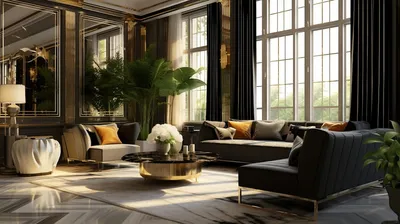
When it comes to luxury furniture, European design has long been synonymous with sophistication and elegance. From the opulent furnishings of French palaces to the minimalist charm of Scandinavian interiors, European design continues to influence the global furniture market. This article delves into the historical and contemporary impact of European design on luxury furniture, emphasizing its unmatched blend of tradition and innovation.
The Legacy of Classical European Design
Classical European design, characterized by intricate details and rich materials, has set the standard for luxury furniture for centuries. Pieces from the Baroque, Rococo, and Renaissance periods are particularly revered for their lavish ornamentation and craftsmanship. These styles often feature gilded accents, hand-carved wood, and luxurious upholstery fabrics such as velvet and silk.
Baroque and Rococo Influences
Baroque and Rococo designs are renowned for their elaborate details and dramatic flair. Furniture pieces from these eras often include curved lines, floral motifs, and a sense of grandeur that elevates any space. Modern luxury furniture frequently draws inspiration from these styles, incorporating their essence into contemporary designs that appeal to today's tastes while maintaining an air of timeless elegance.
Renaissance Revival
The Renaissance period heralded a return to classical antiquity, with an emphasis on symmetry, proportion, and harmony. Today, many luxury furniture designers look to this era for inspiration, creating pieces that balance form and function beautifully. Whether it’s a stately dining table with intricate inlays or a majestic armchair, Renaissance-inspired furniture exudes sophistication and refinement.
Modern European Design Trends
While classical influences remain strong, modern European design has also made significant contributions to luxury furniture. Contemporary European styles often prioritize clean lines, functionality, and innovation, reflecting the region's progressive approach to design.
Scandinavian Minimalism
Scandinavian design, with its emphasis on simplicity and functionality, has had a profound impact on modern luxury furniture. Characterized by clean lines, neutral color palettes, and natural materials, Scandinavian furniture pieces are both functional and aesthetically pleasing. This style is perfect for creating serene, clutter-free spaces that feel luxurious yet understated.
Italian Modernism
Italy has always been a powerhouse in the world of furniture design, and its modern contributions are no less impressive. Italian modernism combines sleek, contemporary forms with high-quality materials and craftsmanship. From modular sofas to chic coffee tables, Italian modern furniture pieces are known for their elegance and innovation, making them a staple in luxury interiors.
Blending Tradition with Innovation
The beauty of European design lies in its ability to seamlessly blend tradition with innovation. Today's luxury furniture pieces often integrate the rich heritage of classical styles with cutting-edge design and technology. This fusion results in furniture that not only pays homage to its roots but also addresses the needs and lifestyles of modern consumers.
Conclusion
European design's influence on luxury furniture is undeniable. Its rich legacy and forward-thinking approach continue to shape the industry, offering pieces that blend timeless elegance with contemporary sophistication. Whether you're drawn to the ornate charm of Baroque and Rococo or the sleek minimalism of Scandinavian design, European-inspired luxury furniture promises to elevate any space with its unique blend of history and modernity.



